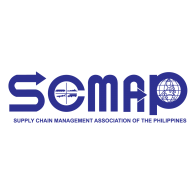Lost amidst Rodrigo Duterte’s recent State of the Nation Address—well, technically, his colorful off-script remarks—is a call for Philippine businesses to establish more manufacturing facilities in the country.
“It is not enough that we mine this wealth,” the president said. “What is more important is that we convert the raw material thereof into finished products for international and local purposes … Therefore, I call on our industrialists, investors [and] commercial barons to put up factories and manufacturing establishments right here in the Philippines to process our raw materials into finished products.”
The statement was made with a particular reference to his remarks on mining in the Philippines, pointing out that raw materials extracted from this country get shipped out to other countries to be processed, only to return here “in the form of consumer goods at prices twice or thrice the value of the original raw materials foreign corporations pay for them.” But these sentiments could apply to agricultural products, too.
Duterte’s SONA, being heavy on rants and light on policy direction, is a missed opportunity to relay initiatives to truly bring lasting change to more Filipinos. But we should also point out that there are many efforts, happening behind the scenes, moving towards this direction. Several government agencies are working to encourage investment in the Philippines, improve competitiveness and enable an environment that would foster jobs and, hopefully, enhance quality of life.
But there is one big thing we have to remember: no country—not even one in an archipelago—is an island. Being a self-sustaining one is a nice thought, but value chains now stretch across the globe. Even Filipino companies are sourcing raw materials from abroad, or establishing processing facilities abroad. Ordinary Filipinos are buying more things from abroad, a prospect made easier by technology. So, yes, establish more manufacturing facilities in the country, but we have to plug the gap.
Enhance connectivity. We are a country of over 7,000 islands, so it’s a no-brainer we have to focus on this one. How easy is it to bring raw materials from one point of the country to another? How are our roads? How are our ports? Ports are particularly important—the Philippines relies heavily on sea transport and this is one field we can make a significant impact on. Also, are government regulations relating to trade and connectivity helping or hurting our manufacturers?
Improve capacities. Building physical facilities is easy, but filling them with competent individuals (and the right technology to aid them) who will transform it into world class manufacturing facilities is another. Can we get the right people? Can we develop the right people? Can we develop new methods and techniques that will make not just our processes, but our finished products, better? If we have difficulty answering these questions, it might explain why our raw materials are moving out of the country to be processed. One more thing: we have untapped talents tucked away at state universities and research institutions, and they can be lured away from the Philippines by a bigger paycheck.
A better environment. Electricity costs are high. Regulators are often treated with mistrust: “you’ll need to go under the table to get things done.” Getting talent is difficult: they either move out for better things, or still need to be trained to be up to speed. There are many factors before a business decides to invest in a region, or a country, and there is lot of work to be done. Perhaps one such factor we should deal with is how everything seems to be centered on the major cities—people are wary of moving out of Manila, for example, for some other part of the country. Now, we’re not saying all towns and cities should be as sparkling and modern as the national capital—that isn’t necessarily a good thing—but if we can make elsewhere in the country just as competitive, not just for business but also for living in, maybe we can make strides? Better planning, affordable housing, knowing that there’s something to do after a day’s work…
Again, many efforts towards these are ongoing. They are scattered, and sometimes they are conflicting, but there are efforts. If we are to truly (and fully) benefit from what the country’s lands and seas have to offer, then we have to put in the work to make sure that happens. Oh, and sometimes, all we need is a clear direction.
Upcoming events: Our next General Membership Meeting will tackle tech-based logistics solutions, with Transportify’s Paulo Bengson and OpenPort’s Johanne Lim as guests. It will be on August 17, 1pm, at the F1 Hotel Manila. Also, we’re still accepting delegates and sponsors for this year’s SCMAP Supply Chain Conference, the industry’s most prestigious event. More information on both events are at scmap.org.
Henrik Batallones is the marketing and communications executive of SCMAP. A former board director, he is also editor-in-chief of the organization’s official publication, Supply Chain Philippines. More information about SCMAP is available at scmap.org.





